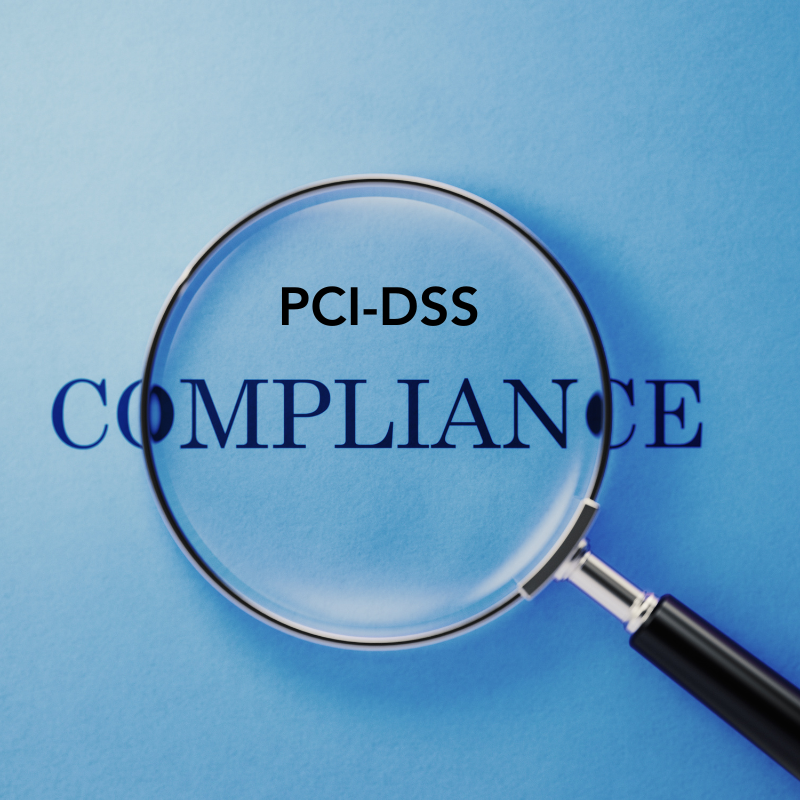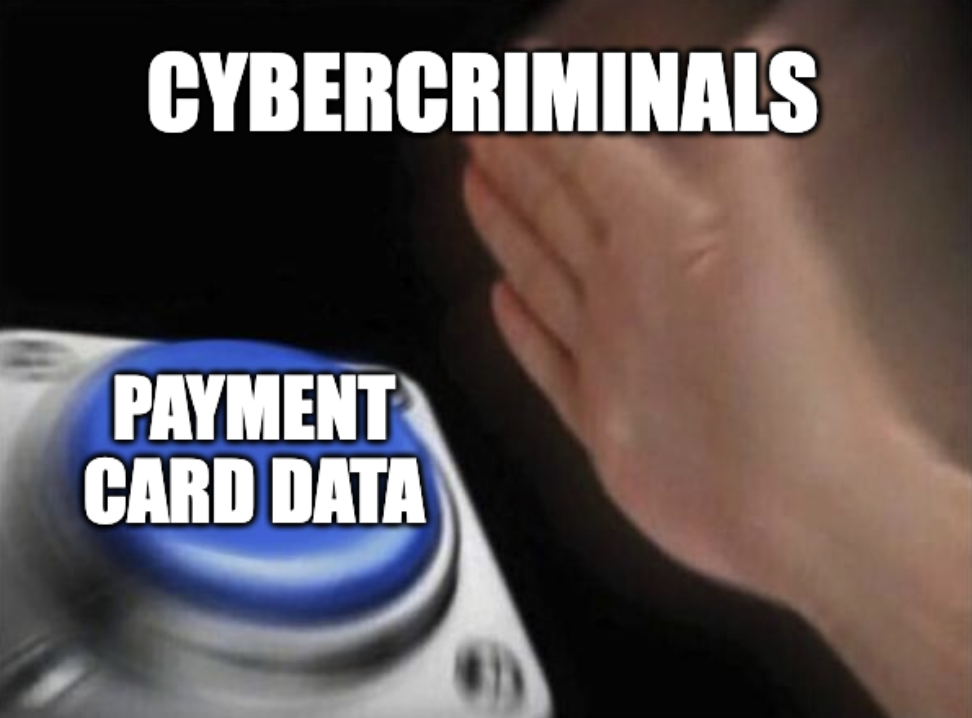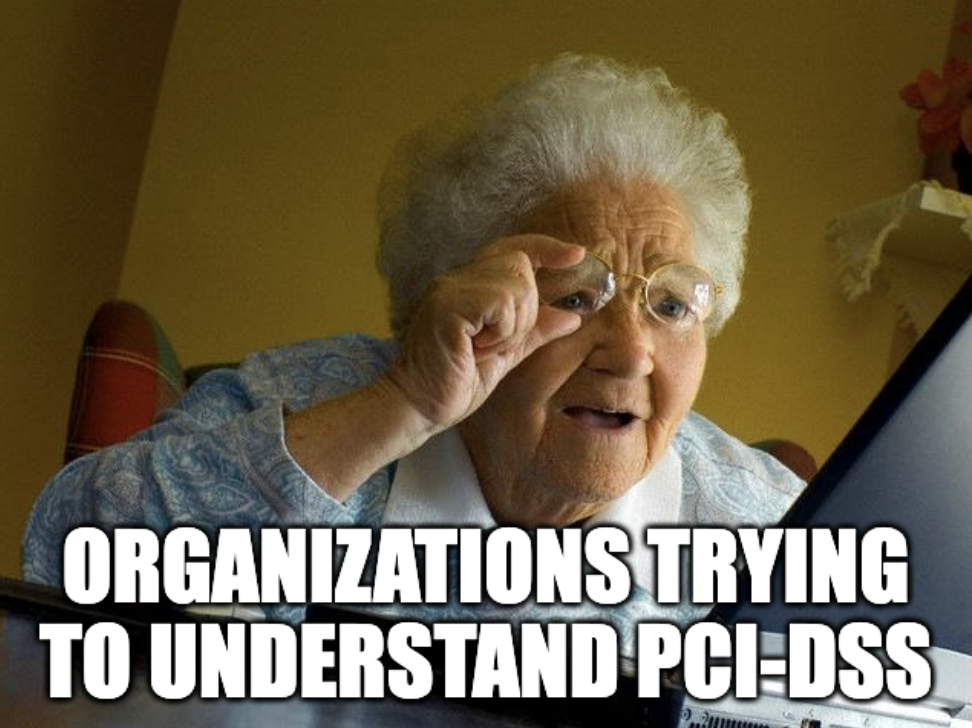Ensuring PCI-DSS Compliance Amidst Hidden Threats

Updated May 15, 2024
The Battle Against Cyber Shadows
Digital footprints are expanding at an unprecedented rate, with individuals leaving traces of their credit or debit card information every time they click ‘Buy Now.’ In the swirling vortex of online transactions, a treasure trove of payment card information is continuously zipping across networks and nestling in storage vaults. To cyber thieves, this torrent of data is the golden goose – if they can crack the code.
Why is payment card information their Holy Grail? It’s the versatility of its illicit uses. With pilfered card details, fraudsters can party on someone else’s dime, creating a spree of fraudulent purchases. If they feel entrepreneurial, they can churn out counterfeit cards or peddle the stolen data in the dark alleys of the web where there’s a flourishing underground market.
But the potential harm doesn’t stop there. Payment card data is often the key that unlocks Pandora’s box of personal information, such as names, addresses, and email addresses. In the hands of identity thieves, this information could be used to open new accounts or, in a worst-case scenario, commit crimes under an unsuspecting victim’s name.

Unsurprisingly, given the rich pickings, cybercriminals are forever sharpening their skills, devising new schemes to breach the fortresses erected by businesses and financial institutions. With vast caches of payment card data under their watch, these organizations are irresistible targets to attackers.
Enter the PCI-DSS, the cyber knight in shining armor. This essential standard provides a shield wall of security measures designed to safeguard this precious data and slash the risk of a data breach.
So, What Exactly is PCI-DSS?
PCI-DSS stands for Payment Card Industry Data Security Standard – a code of conduct set by major credit card companies to protect cardholders’ sensitive data during transactions. Far from being optional, this set of requirements is mandatory for all organizations processing credit card transactions, ranging from quaint local merchants to colossal financial institutions.

Staying Afloat in a Digital Sea: The Role of Data Security
The boom of online transactions has led to an avalanche of credit card information being stored and transmitted. Riding this digital wave demands robust data security measures like those mandated by PCI-DSS. Adherence to these standards maintains the payment card industry’s integrity and helps keep consumer trust from going under.
How Does PCI-DSS Stand Out from Other Compliance Mandates?
Unlike other compliance mandates imposed by governmental bodies, PCI-DSS is a creature of the payment card industry. Although there are no legal penalties for flouting these rules, the consequences of non-compliance are no less severe. Offending organizations face the prospect of being cast adrift, unable to process payment card transactions—a potentially devastating blow, especially for businesses heavily reliant on online sales.
The Legal Gravitas of PCI-DSS
While PCI-DSS is not enshrined in law, its mandatory nature and the serious implications of non-compliance make it as potent as any legal requirement for organizations dealing with payment card data.
Navigating the PCI-DSS: Six Guiding Principles
The PCI Data Security Standard is built on six cardinal rules, serving as the lighthouse guiding businesses to safe data handling.
- Construct a Secure Network: Fortify your data fortress with firewalls, secure router configurations, and individual, secure passwords for network devices.
- Safeguard Cardholder Data: Treat sensitive data like a secret message, encrypting it during transmission and storage. Secure cryptographic keys make your data a mystery only authorized users can solve.
- Forge a Vulnerability Management Program: Like a weather forecast for cyber threats, these programs involve regular scanning for system vulnerabilities and keeping security software up-to-date.
- Implement Strong Access Control Measures: Exercise the principle of least privilege, granting system access only to those who genuinely require it. Make your access keys exclusive and secure.
- Constantly Monitor and Test Networks: Keep an eagle eye on your network using logging mechanisms and intrusion detection systems. Regular testing ensures you can spot signs of intrusion or weakness swiftly.
- Draft an Information Security Policy: Create a comprehensive charter communicating how to protect cardholder data to all employees. Keep it dynamic with regular updates and strict compliance.
Complying with these principles isn’t just about ticking the PCI-DSS checklist—it’s about forging a trust pact with your customers.
Why PCI-DSS Compliance Matters
PCI-DSS compliance isn’t merely a requirement—it’s your business’s pledge to safeguard your customers’ sensitive information. It’s your assurance to customers, saying loud and clear, “Your data is under lock and key with us.” Betray this trust, and you open Pandora’s box of potential data breaches, fraud, and a whirlwind of financial and reputational havoc.
Avoiding the Pitfalls: Common PCI Violations
The labyrinth of PCI-DSS compliance can be a treacherous path. Even with the best intentions, companies often stumble into traps, undermining their compliance efforts and attracting the unwanted attention of auditors.

Hidden threats embedded within files represent one of the most formidable challenges organizations encounter in their journey of PCI-DSS compliance. Such concealed dangers aren’t merely limited to benign errors or accidental oversights. Instead, they manifest as malicious entities like ransomware, which can lock critical data and demand ransoms; keyloggers that discreetly record every keystroke to steal sensitive data; and rootkits, which can grant unauthorized users access to a system without detection.
These threats easily infiltrate an organization’s systems via email, shared files, and web portals. They compromise the integrity and confidentiality of payment card data, resulting in catastrophic breaches leading to non-compliance. For businesses striving to uphold the gold standard of PCI-DSS, it is crucial to add preventative mechanisms to sanitize files and identify threats before they cross into the organization.
Hidden threats in files are only one of the vectors of attack. Other common threats to PCI-DSS compliance include:
- Weak Passwords and Authentication: Robust passwords and sturdy authentication methods are your first line of defense against intruders.
- Unsecured Remote Access: In the era of remote work, ensure remote access points are barricaded with firewalls, encryption, and strong authentication.
- Lack of Proper Encryption: Your data is a sitting duck without encryption. Ensure strong encryption practices to secure data in transit and at rest.
- Inadequate Security Policies and Procedures: Consistent adherence to security practices is vital. Ensure enforceable security plans are in place.
- Excessive Data Exposure: Strict data access based on business needs and secure data storage practices is crucial to prevent unnecessary exposure.
Steering clear of these pitfalls ensures PCI-DSS compliance and reinforces customer trust, showing them their data is in safe hands.
The Price Tag of Non-Compliance
Non-compliance with PCI-DSS standards doesn’t just cost in dollars—it costs in customer trust. Data breaches and fraud can trigger a ripple effect of financial and reputational damage. Non-compliance penalties can range from $5,000 to $100,000 per month. But more significant than these fines is the erosion of customer trust, with studies showing a majority of customers lose faith in an organization post-breach.

Stop the Hidden Threats to Maintain PCI-DSS Compliance
Traditional antivirus (AV) software, though essential for addressing recognized threats, finds itself outpaced by the swiftly changing nature of cyber risks. Organizations require a broader, proactive stance for a truly fortified defense against hidden menaces.
Incorporating Content Disarm and Reconstruction (CDR) or file sanitization into cybersecurity measures is paramount. Distinct from AV, CDR doesn’t depend on existing threat intelligence. It reconstructs files using safe elements, effectively countering potential threats that AV might overlook.
Part of this all-encompassing approach is retrospective scanning. This allows organizations to analyze the original versions of files after sanitization, assessing the potency of their CDR implementations. With CDR as its foundational pillar, this integrated approach empowers organizations to stay abreast of the continuously shifting cyber threat environment.
Protect Sensitive Data To Maintain PCI-DSS Compliance
Data Detection and Response (DDR) employs techniques like anonymization and tokenization to provide robust protection for sensitive payment card information, aligning with PCI-DSS standards. Anonymization removes personally identifiable information from data sets, making it impossible to trace data back to an individual, thus securing cardholder data against identity theft and fraud. Tokenization further enhances security by replacing sensitive data elements with non-sensitive equivalents, or tokens, which are useless to hackers without access to the organization’s decryption key. These methods drastically reduce the risk of sensitive data exposure, even during a data breach, thereby maintaining the data’s integrity and the cardholders’ privacy.
Votiro Stops Hidden Threats
Maintaining compliance with PCI-DSS is essential for any company accepting payment cards. Votiro, a trusted partner in the financial services sector, delivers Zero Trust DDR that integrates seamlessly into existing infrastructure to proactively defend against file-based threats and privacy risks. This integration, complemented by Votiro’s sophisticated data analytics, enables comprehensive security measures that protect employees, customers, and the organization’s reputation from digital threats while adhering to regulatory requirements.
Votiro further strengthens its data protection suite by incorporating CDR and optional AV capabilities. These enhancements boost security and provide auditable tracking of unknown threats as they are neutralized, a critical feature for protecting sensitive payment card information. By leveraging Votiro’s solutions, financial organizations can meet their performance demands and achieve a measurable return on investment (ROI), ensuring compliance with industry regulations and safeguarding sensitive customer data against various digital risks.
Votiro is designed for rapid implementation, using an API-centric solution that seamlessly integrates into existing business workflows, enabling immediate protection against cyber threats in the tools and solutions already in use at your organization. Implementation times are impressively short, with SaaS installations taking as little as 10 minutes and on-premises installations taking just 90 minutes.
Contact us today to learn how Votiro sets the bar for addressing hidden threats in files to keep your organization secure while maintaining compliance. You can also skip right to a free 30-day trial of Votiro!
![]()
News you can use
Stay up-to-date on the latest industry news and get all the insights you need to navigate the cybersecurity world like a pro. It's as easy as using that form to the right. No catch. Just click, fill, subscribe, and sit back as the information comes to you.
Sign-up Here!
Subscribe to our newsletter for real-time insights about the cybersecurity industry.



